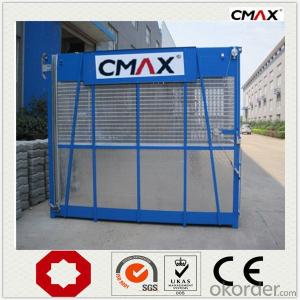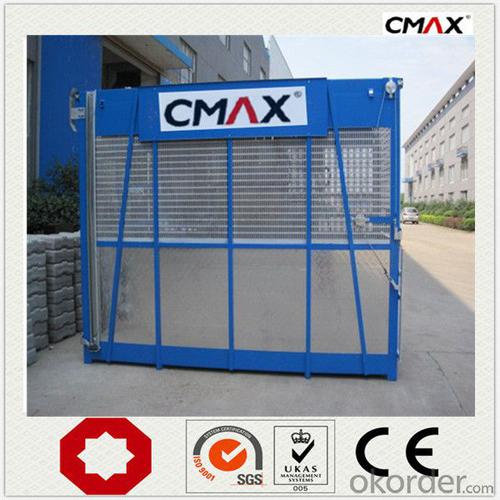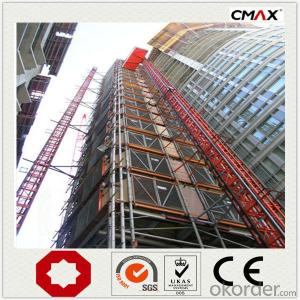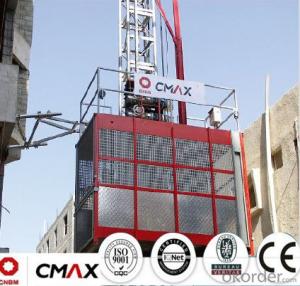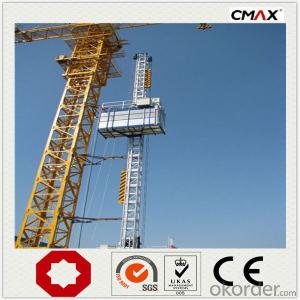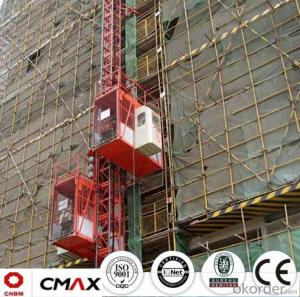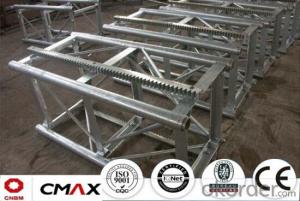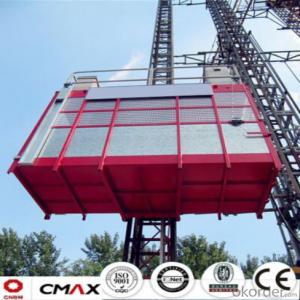Buidling Construction Hoist Hot Galvanize
- Loading Port:
- China main port
- Payment Terms:
- TT OR LC
- Min Order Qty:
- 1 unit
- Supply Capability:
- 30 unit/month
OKorder Service Pledge
OKorder Financial Service
You Might Also Like
Specification
Building Hoist Description
Condition: New
Application: Construction
Payload(kg):1000
Lifting Speed(m/min):0~60
Motor Power(kw): 3*11
Safety Device: SAJ30-1.4
Cage: Single
Counterweight: No
Certification: CE,ISO
Place of Origin: China(Mainland)
Model Number: Type:SC100
Packaging & Delivery of Building Hoist
Packaging Detail: Nude package
Delivery Detail: 25-30days
Building Hoist Images
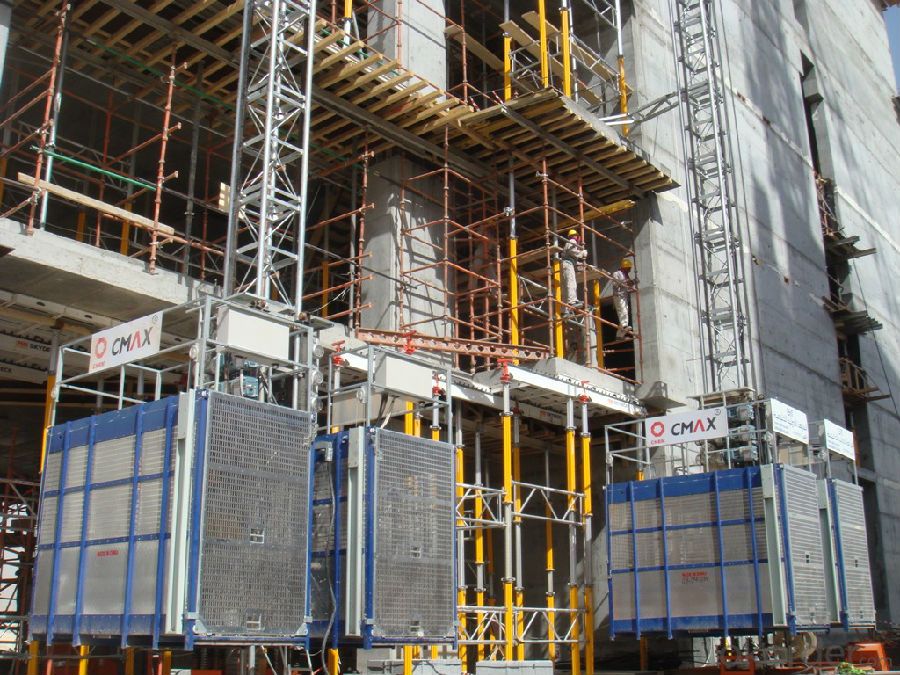
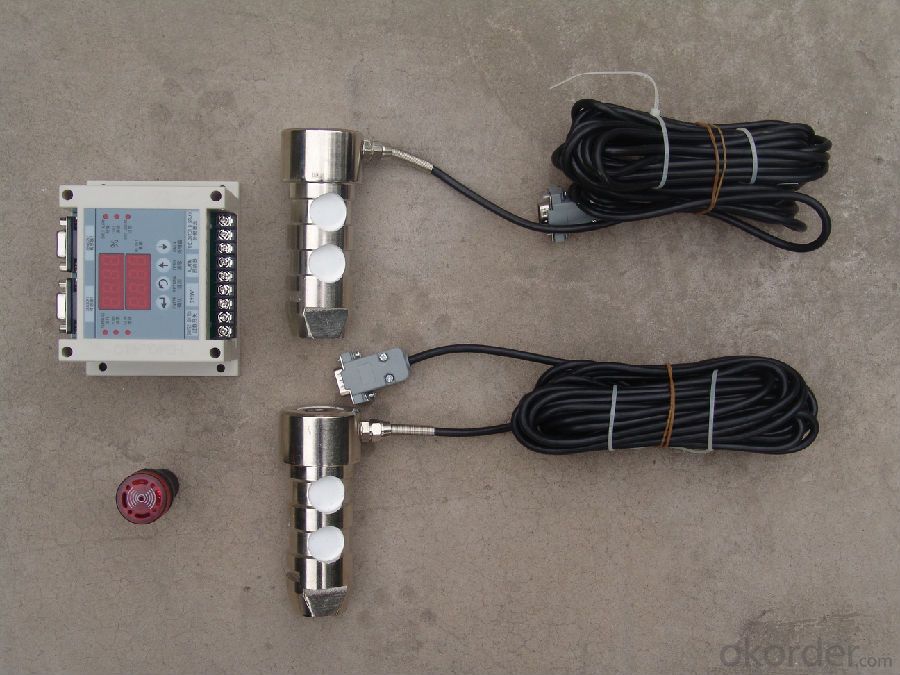
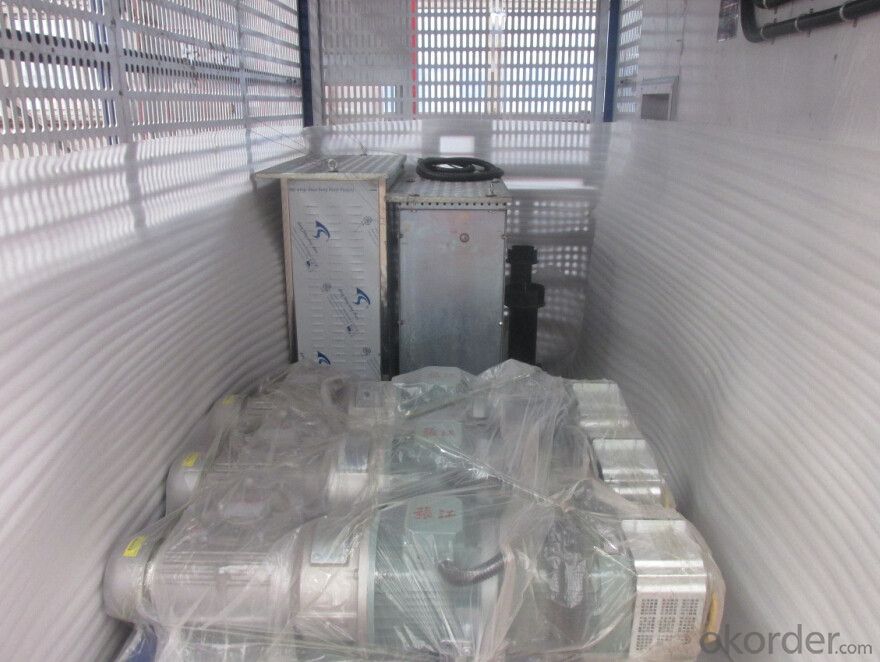
Building Hoist Specifiction
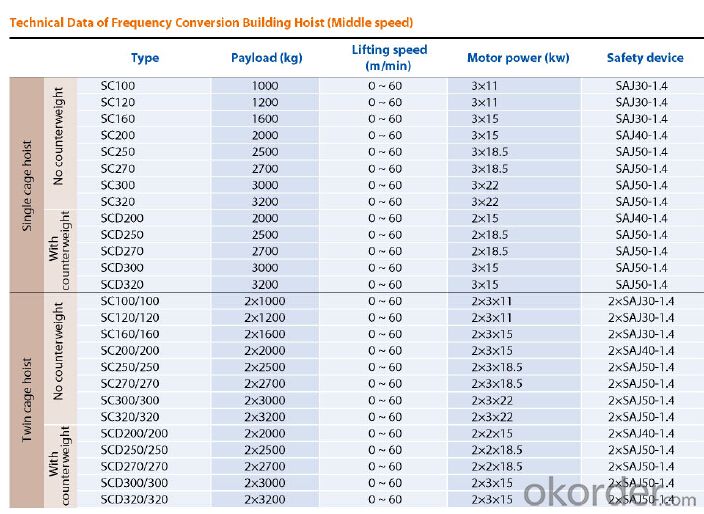
FAQ of Building Hoist
Q: What is the building hoist main purpose?
A: Building hoist equipped with double or single cabin to transport the materials and labors up and down. It's the ideal
construction equipment for vertical transportation in the field of construction.
Q: What is the main structure of building hoist?
A: The P/M construction hoist mainly contains metal structure, driving system, electrical control system, cable guide &
protection system, electrical top crane and safety device.
Q: What is the meaning of the building hoist’s code?
A: Take SC200/200 for example: “SC” stands for rack and pinion hoist, “200/200” stands for double cage and capacity
is 2 tons per cage. “SC200” stands for single cage and capacity is 2 tons.
- Q: This question asks for the different types of lifting equipment that can be compatible with a building hoist.
- <p>Building hoists are commonly used in construction projects to lift materials and personnel. Compatible lifting equipment includes various types of hooks, slings, and shackles for securing loads; lifting beams for heavier or bulkier items; and specialized attachments like pallet forks for moving palletized loads. It's crucial to use lifting equipment that is rated for the weight of the load and compatible with the hoist's specifications to ensure safety and efficiency.</p>
- Q: This question asks if a building hoist can be utilized for the purpose of lifting heavy objects.
- <p>Yes, a building hoist is specifically designed for lifting heavy objects in construction settings. It is a mechanical device that can lift and lower materials such as concrete, bricks, and tools to various levels of a building under construction. Building hoists are engineered to handle substantial weight and are equipped with safety features to ensure secure and efficient operation. However, it is crucial to adhere to the hoist's weight capacity and safety guidelines to prevent accidents and ensure the proper use of the equipment.</p>
- Q: This question asks about the process of changing the speed of a building hoist, which is a device used in construction to lift materials.
- <p>Adjusting the speed of a building hoist typically involves accessing the hoist's control panel or motor settings. For electric hoists, this may include adjusting the frequency of the power supply through a variable frequency drive (VFD), which alters the speed of the motor. For manual hoists, speed adjustments might involve changing the gear ratio or the tension on the hoisting rope. Always refer to the hoist's user manual for specific instructions, as different models have different mechanisms. Safety should be a priority; ensure that any adjustments are made by trained personnel and in compliance with safety regulations.</p>
- Q: This question seeks to understand the various types of electric lifting equipment utilized in the construction industry.
- <p>In the construction industry, various types of electric lifting equipment are used to facilitate the movement of heavy materials and equipment. Some of the common types include: 1. Electric Hoists: These are used for vertical lifting and lowering of loads. 2. Electric Cranes: They are mobile lifting machines with a long boom and can move loads horizontally and vertically. 3. Electric Forklifts: They are used for lifting and transporting heavy loads in a warehouse or construction site. 4. Electric Scissor Lifts: These are mobile platforms that can be raised to allow workers to reach high areas. 5. Electric Stackers: Used for stacking and unstacking materials in a warehouse. 6. Electric Pallet Trucks: These are used for moving heavy pallets of materials. Each type of equipment serves a specific purpose and is chosen based on the requirements of the construction project.</p>
- Q: This question asks about the various elements that can influence the efficiency and effectiveness of a building hoist.
- <p>The performance of a building hoist is affected by several factors including the type and weight of materials being lifted, the frequency of use, the hoist's mechanical condition and maintenance, environmental conditions such as wind and temperature, the skill and training of operators, and the design and capacity of the hoist itself. Proper installation, regular inspections, and adherence to safety protocols also play a crucial role in ensuring optimal performance and safety. Additionally, the quality of electrical systems, the efficiency of the drive mechanism, and the structural integrity of the hoist's components can significantly impact its operation.</p>
- Q: Is it feasible to repair or replace a building hoist with ease?
- <p>The ease of repairing or replacing a building hoist depends on several factors. For minor issues, repairs can often be done relatively easily by trained technicians. However, for major malfunctions or when a hoist is outdated, replacement might be necessary. This process can be complex and requires expertise to ensure safety and compliance with building codes. Factors such as the hoist's age, the complexity of the system, and the availability of replacement parts play a significant role in determining the ease of repair or replacement. In some cases, it might be more cost-effective to replace rather than repair, especially if the hoist is old or if repair costs are high.</p>
- Q: Is it possible to use a lifting device to lift objects that are heavier than its specified maximum load?
- <p>No, a lifting device should never be used to lift objects that exceed its rated load capacity. Doing so can lead to catastrophic failure of the device, potentially causing serious injury or death. Always adhere to the manufacturer's specifications to ensure safety and prevent accidents. Overloading a lifting device can result in structural damage, compromised safety mechanisms, and increased risk of collapse or dropping the load. It is crucial to respect the load limits to maintain the integrity and reliability of the lifting equipment.</p>
- Q: Safety device for construction elevator
- When the cage is in an emergency for various reasons during the operation, the driver can press the stop switch at any time, making the cage stop running. The fast stop must be a non-self-restoring safety device, usually installed in the top of the cageConstruction lifter lifting door, protective enclosure door are equipped with electric interlock switch, which can effectively prevent because of hoisting cage or protective enclosure door open it up and running and materials caused by falling, only when the hoisting cage door and protective enclosure fully closed to start running.
- Q: What are the primary materials that are commonly utilized in the construction of hoists?
- <p>Hoists are typically constructed using a combination of metals and synthetic materials for strength and durability. Steel, particularly alloy steel, is a common choice due to its high tensile strength and resistance to wear. Aluminum is also used for its lightweight properties, especially in mobile hoists. Synthetic materials such as nylon or polyester are used for hoist ropes and cables due to their resistance to abrasion and corrosion. Additionally, hoists may incorporate components made from brass, bronze, or other metals for specific parts that require low friction or high resistance to corrosion.</p>
- Q: How does the construction elevator add up
- You can use a ready-made high-altitude operating platform and a high-altitude working platform
Send your message to us
Buidling Construction Hoist Hot Galvanize
- Loading Port:
- China main port
- Payment Terms:
- TT OR LC
- Min Order Qty:
- 1 unit
- Supply Capability:
- 30 unit/month
OKorder Service Pledge
OKorder Financial Service
Similar products
Hot products
Hot Searches
Related keywords
